Forty years ago, the Voyager 2 spacecraft made its closest approach to Jupiter. Managed by the Jet Propulsion Laboratory in Pasadena, California, the Voyagers were a pair of spacecraft launched in 1977 to explore the outer planets. Initially targeted only to visit Jupiter and Saturn, Voyager 2 went on to investigate Uranus and Neptune as well, taking advantage of a rare planetary alignment that occurs once every 175 years to use the gravity of one planet to redirect it to the next. Although not the first to explore the giant planet, Pioneer 10 and 11 completed earlier flybys in 1973 and 1974, respectively, the Voyagers carried sophisticated instruments to conduct more in-depth investigations. Voyager 2’s twin, Voyager 1, made its closest approach to Jupiter in March 1979.
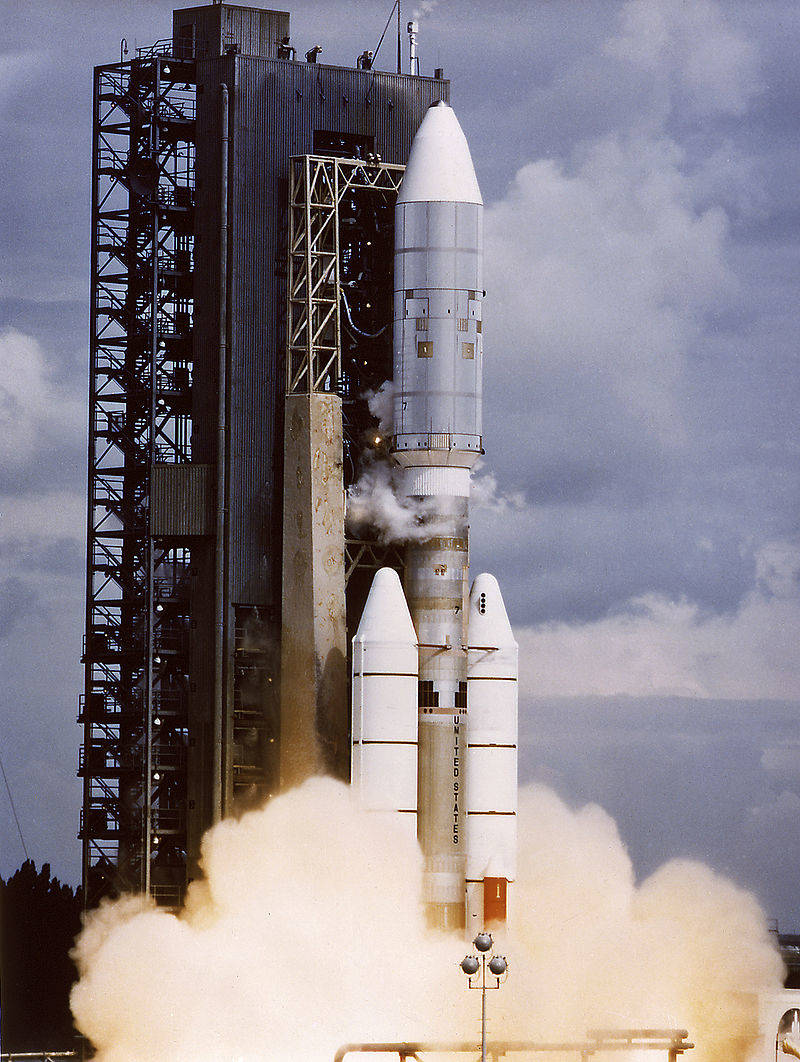
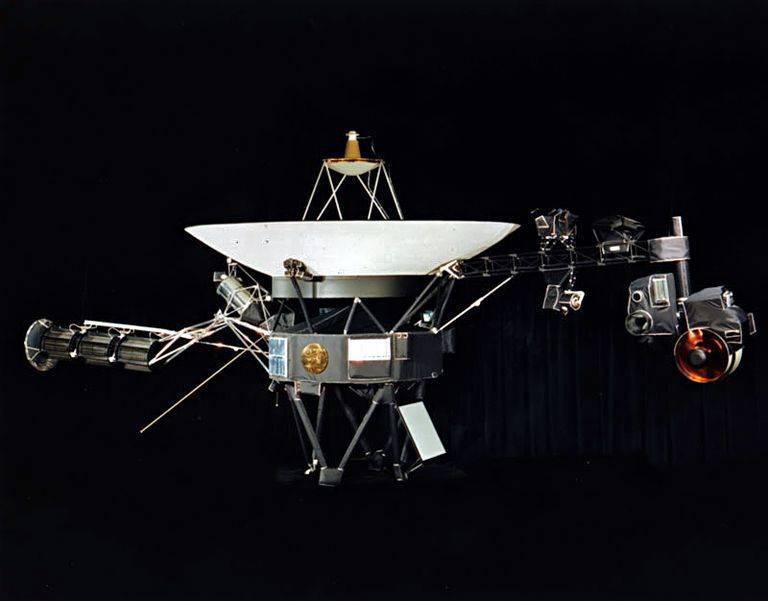
Left: Launch of Voyager 2. Right: Model of the Voyager spacecraft.
Each Voyager carried a suite of 11 instruments, including:
- an imaging science system consisting of narrow-angle and wide-angle cameras to photograph the planet and its satellites;
- a radio science system to determine the planet’s physical properties;
- an infrared interferometer spectrometer to investigate local and global energy balance and atmospheric composition;
- an ultraviolet spectrometer to measure atmospheric properties;
- a magnetometer to analyze the planet’s magnetic field and interaction with the solar wind;
- a plasma spectrometer to investigate microscopic properties of plasma ions;
- a low energy charged particle device to measure fluxes and distributions of ions;
- a cosmic ray detection system to determine the origin and behavior of cosmic radiation;
- a planetary radio astronomy investigation to study radio emissions from Jupiter;
- a photopolarimeter to measure the planet’s surface composition; and
- a plasma wave system to study the planet’s magnetosphere.
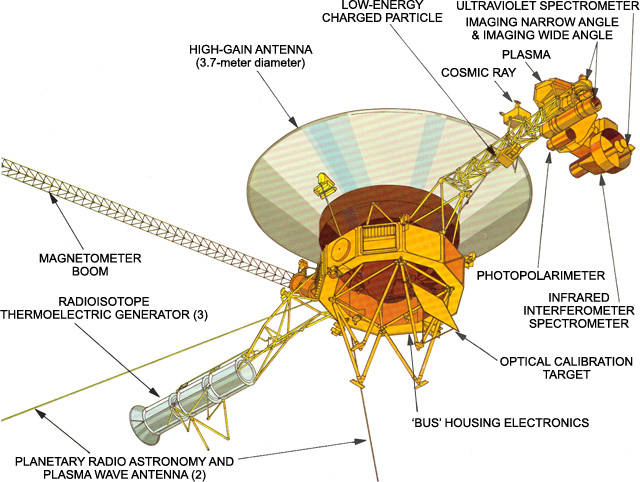
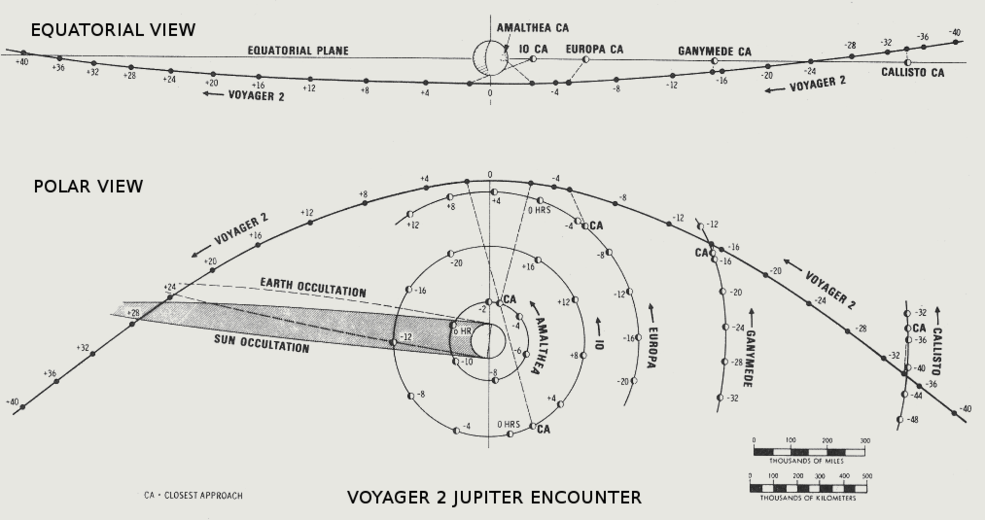
Left: Schematic of the Voyager spacecraft, illustrating the science experiments.
Right: Trajectory of Voyager 2 through the Jovian system.
Voyager 2 was the first of the two spacecraft to launch, on Aug. 20, 1977. Although its twin launched two weeks later, it was on a faster trajectory and arrived at Jupiter four months earlier. Voyager 2 successfully crossed the asteroid belt between Dec. 10, 1977, and Oct. 21, 1978. In April 1978, its primary radio receiver failed, and it has been operating on its backup receiver ever since. The spacecraft began its encounter phase with the Jovian system on April 24, 1979, sending back its first images and taking the first science measurements.
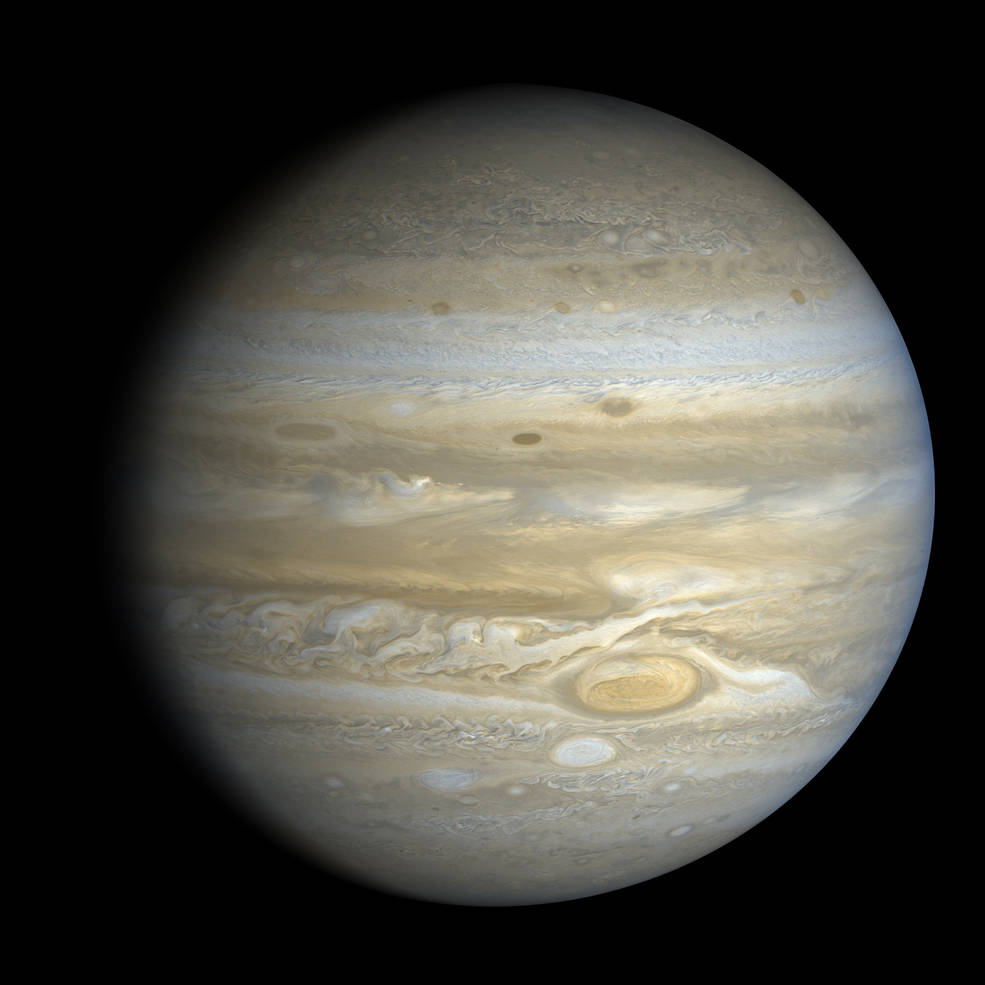
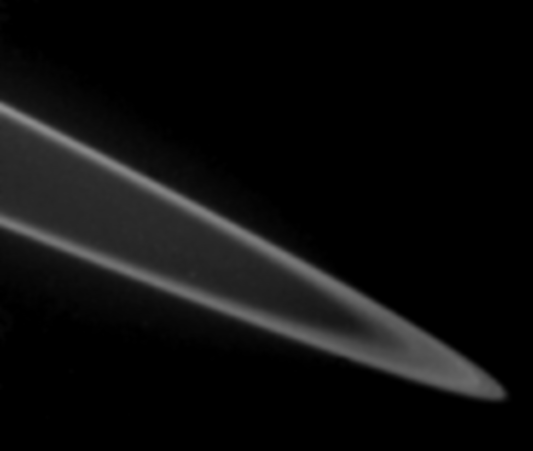
Left: Voyager 2 image of Jupiter and its Great Red Spot.
Right: Voyager 2 image of Jupiter’s thin ring system.
During its inbound journey toward the planet, Voyager 2 made flybys of several of Jupiter’s moons – 133,600 miles of Callisto, 38,600 miles of Ganymede, 127,900 miles of Europa, and 347,000 miles of Amalthea. On July 9, 1979, Voyager 2 made its closest approach to Jupiter, flying within 350,000 miles of the planet’s cloud tops. On the outbound leg of its encounter, it imaged the satellite Io (closest approach of 702,200 miles), and conducted a 10-hour volcano watch of the moon, confirming Voyager 1’s finding that it harbored active volcanoes. Voyager 2 revealed the Great Red Spot to be a complex storm system, and also imaged several smaller storms in the planet’s atmosphere. High-resolution photographs of Europa revealed extensive irregular markings on its surface, possibly indicating a frozen crust floating atop a deep ocean. Looking back at Jupiter as it was backlit by the Sun, Voyager 2 confirmed the existence of a thin ring surrounding the planet. Voyager 2 also discovered a previously unknown moon, later named Adrastea, orbiting Jupiter just outside its rings. By the time observations of Jupiter concluded on Aug. 5, the spacecraft had returned 17,000 images of the planet and its satellites.
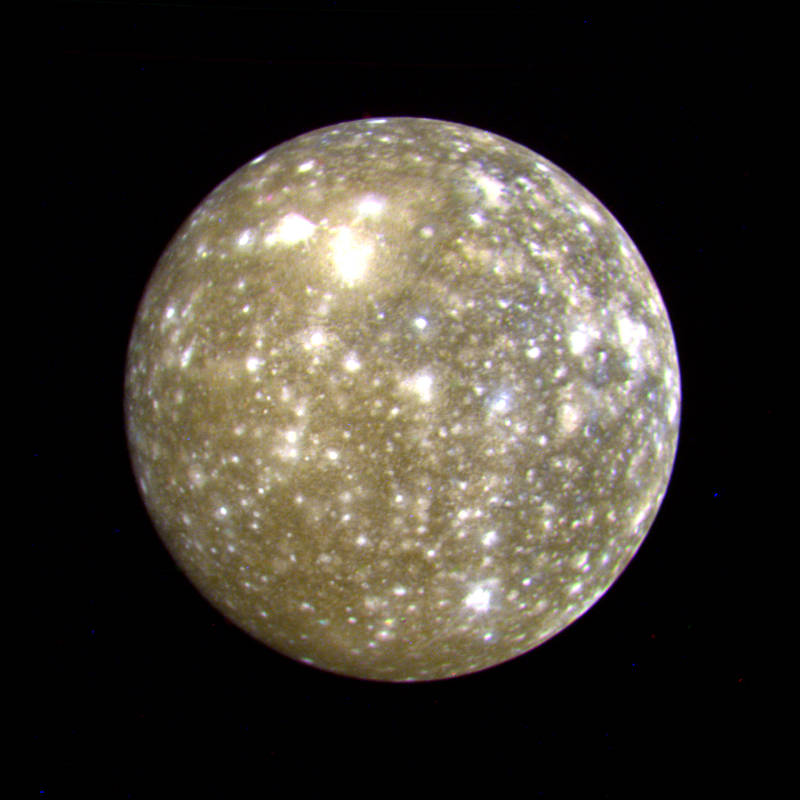
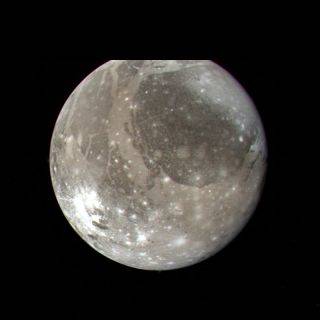
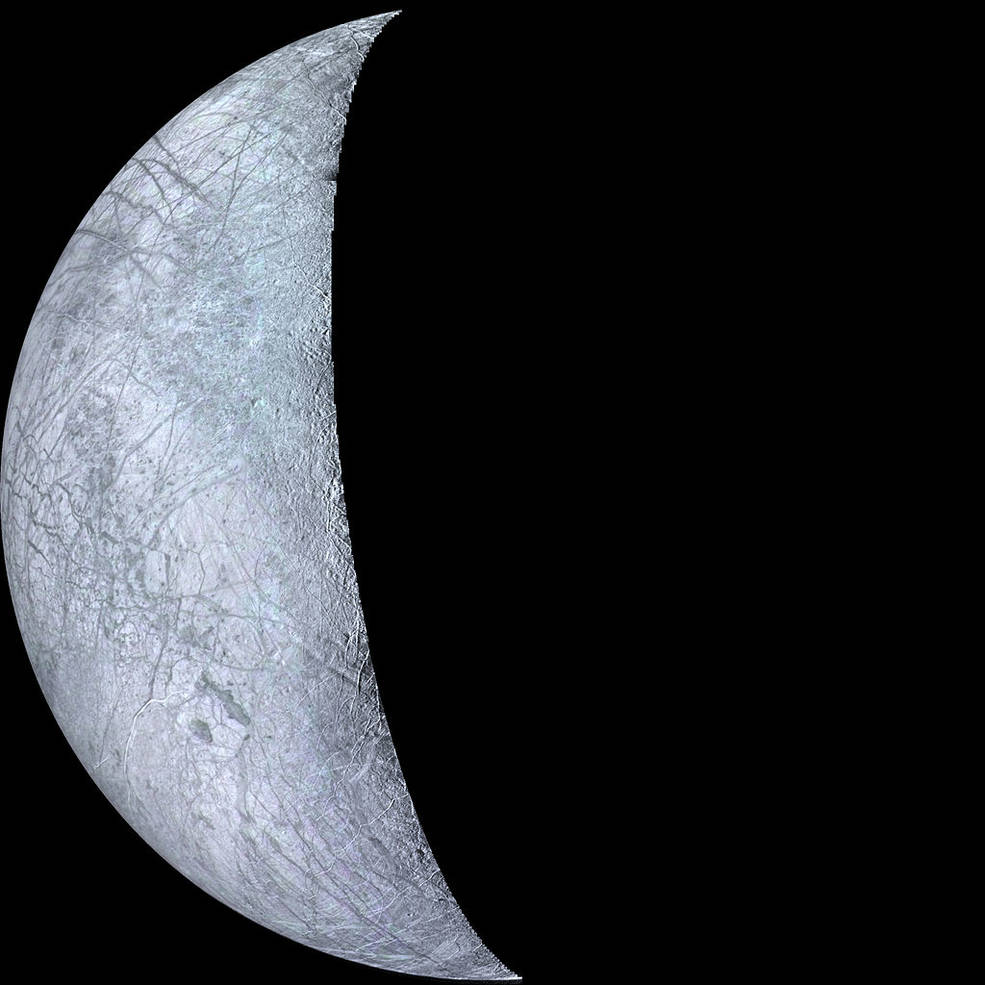
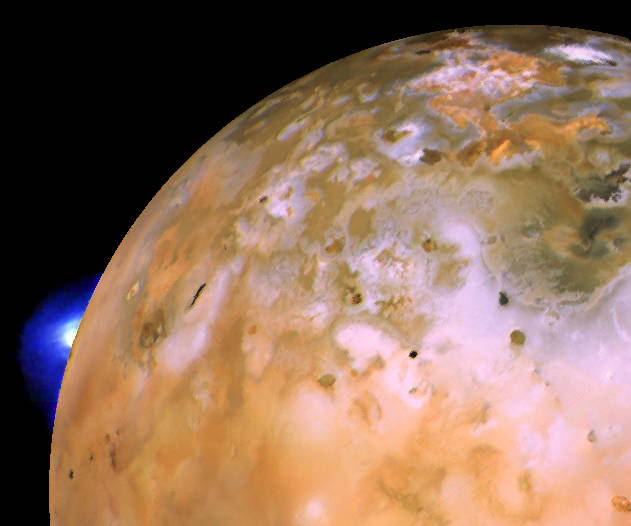
Voyager 2 images of Jupiter’s four largest satellites (left to right) Callisto, Ganymede, Europa, and Io (not to scale).
An active volcano can be seen erupting on Io’s limb.
After its successful exploration of the Jovian system, Voyager 2 sailed on toward Saturn. During its encounter in August 1981, the spacecraft returned a wealth of information about the planet, its spectacular rings, and its satellites. Saturn’s gravity altered Voyager 2’s trajectory to send it to encounter Uranus in January 1986, where it carried it out the first the first reconnaissance of that planet, its satellites, and its rings. In turn, Voyager 2 picked up a gravity assist at Uranus to send it to its final planetary encounter with Neptune in August 1989. Following its reconnaissance of Neptune, Voyager 2 began its Interstellar Mission extension that continues to this day. Over the years, several of the spacecraft’s instruments have been turned off to conserve power, beginning with the imaging system in 1998, but it continues to return data about cosmic rays and the solar wind. On Nov. 5, 2018, six years after its twin, Voyager 2 crossed the heliopause, the boundary between the heliosphere, the bubble-like region of space created by the Sun, and the interstellar medium. It is expected that Voyager 2 will continue to return data from interstellar space until about 2025. And just in case it may one day be found by an alien intelligence, Voyager 2 like its twin carries a gold plated record that contains information about its home planet, including recordings of terrestrial sounds, music and greetings in 55 languages. Instructions on how to play the record are also included.
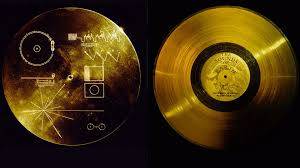
The gold disc carried by each Voyager.
























